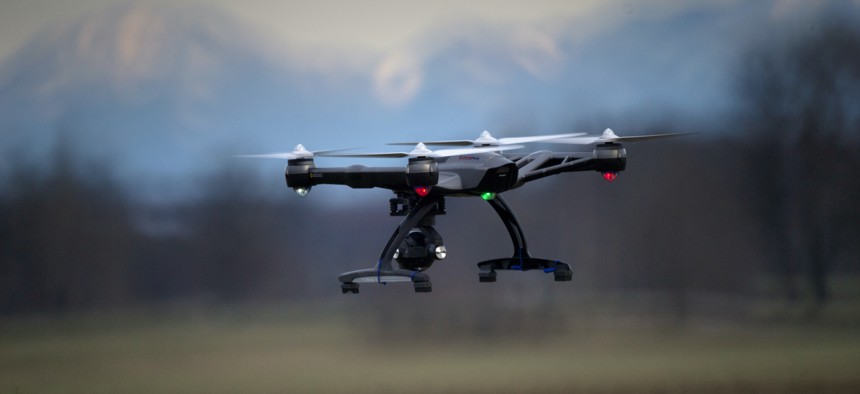How Will the Military Use 5G? A New Drone Experiment Offers Clues

Kypros / Getty
High-speed, low-latency networks promises to help bring AI to bear on floods of battlefield sensor data.
Small copter drones can take video and pick up faint radio signals, but it still takes power-hungry data crunching to positively identify an enemy position. A recent industry experiment showed that 5G networking gear can bridge that gap.
In May and again this month, Lockheed Martin and Verizon used small camera-and-signals drones—linked by 5G to bigger computers nearby—to spot simulated enemies better than simple camera drones could do.
“This technology detected and geo-located low power [radio-frequency] signals that adversaries could use to communicate [or] sensor jam. And the signals information that the drones detected was transmitted in real time over a private 5G ultra-wideband network,” Dan Rice, vice president of military 5G programs at Lockheed Martin, told reporters on Tuesday. “The data was then processed by advanced signal processing algorithms.”
The U.S. military has been pressing ahead with research on deploying 5G for use on bases, in smart warehouses, etc. But the demonstration, which members of the military attended but was sponsored privately by Lockheed Martin and Verizon, shows that the ability to send large amounts of data over 5G’s (relatively) short ranges has relevance to actual battlefield operations. The experiment shows how AI could be brought to bear on a wide range of battlefield sensor data, which in urban environments could include live video, commercial cellular signals, and a wide variety of communications and electronic-warfare waveforms. Recognizing the faintest of digital trails may be key to not becoming a target yourself.
Speed is also key. “How does 5G matter here?” Srini Kalapala, senior vice president for technology and product development at Verizon, told reporters on Tuesday. “Number one:… the throughputs are higher. You can configure the throughputs in a private network easily and the latency is very low.”
But perhaps the most important element of the experiment was the transfer of data between two networks, one private and the other representing a public network. Future conflicts are likely to occur in places where the military has to use public networks. And many regulators are concerned about how well the military and commercial providers will share portions of the 5G spectrum.



